How Did They Sew That? A Space-age Butterfly
Channel stitching for futuristic fashion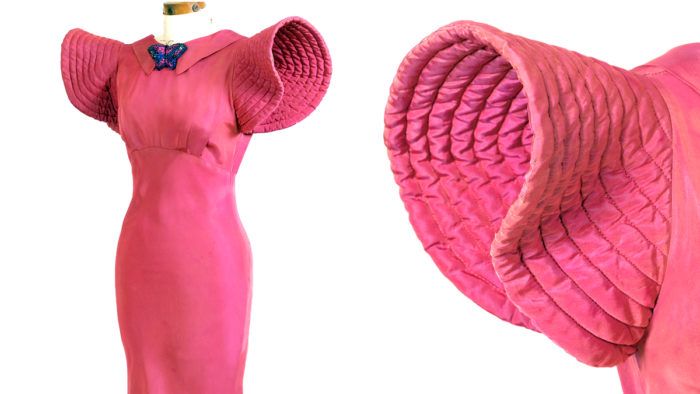
Heading to the theater, you say? An opera? A New York City gala? This 1930s rose-pink silk taffeta gown is ready to hit the town in any decade. Its futuristic style is an unlikely mixture of avant-garde attitude and butterfly innocence. At first glance, all eyes go to the daring shoulders. The cap sleeves feature lofty, channel-stitched rows supported by cotton batting, which creates structure while adding softness. A matching bias-cut, channel-stitched hem balances the dress. (See how to make the channel-stitched rows in Threads #156.) If passersby can look beyond the eye-catching channels, they’ll find the gown’s sweet side: a pointed, flat collar; a bodice tucked into an empire waist that curves toward the natural waist in back; and a butterfly brooch.
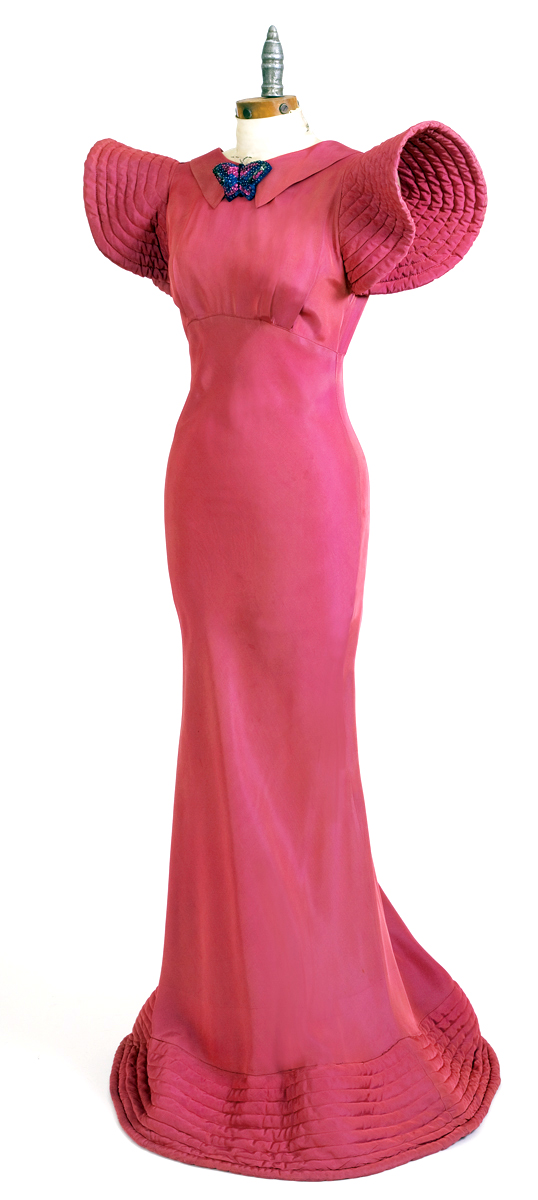
The eight padded channels encircling the arm and the nine channels surrounding the flared hem make the 1930s gown shown on the back cover worthy of extraterrestrial royalty. The simple lines of the dress with its single sparkling embellishment declare homage to the butterfly. To sew this dramatic sleeve and hem, use a sleeveless dress pattern with a separate armhole facing.
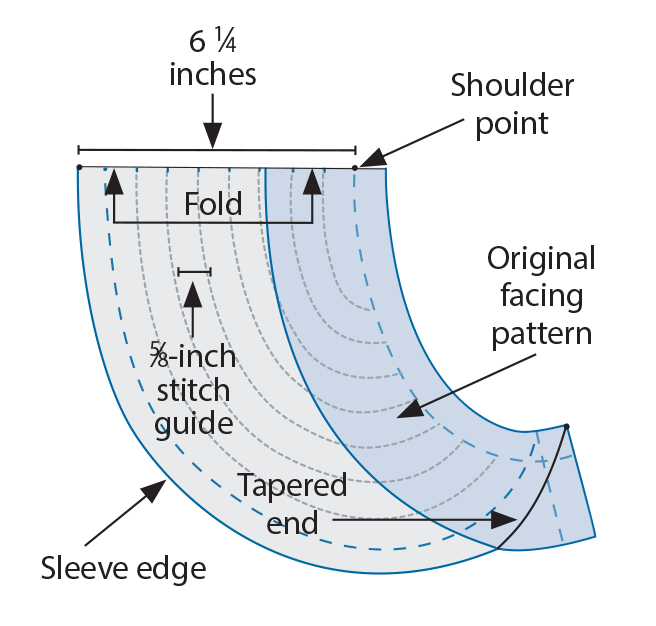
1. To make the sleeves, trace the original armhole facing pattern. Measure 6 1/4 inches from the original shoulder point. From this new sleeve edge, draw a curve that mirrors the shape of the armhole. Taper the curve sharply into the armhole seam at the underarm.
2. The original dress was made with a fluffy cotton batting, but a lofty polyester batting is a lighter weight choice. Cut two layers of fabric and one layer of batting for each sleeve. Sew each sleeve’s outer edge with the fashion fabric’s right sides together and the batting on top. Trim the batting seam allowance as much as possible, turn the sleeve right side…
Start your 14-day FREE trial to access this story.
Start your FREE trial today and get instant access to this article plus access to all Threads Insider content.
Start Your Free TrialAlready an Insider? Log in



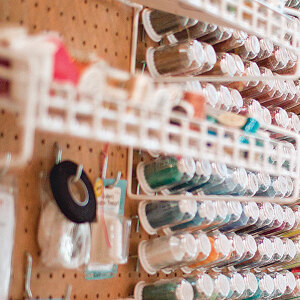



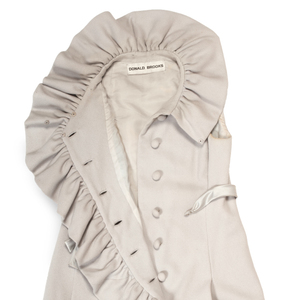


























Log in or become a member to post a comment.
Sign up Log in